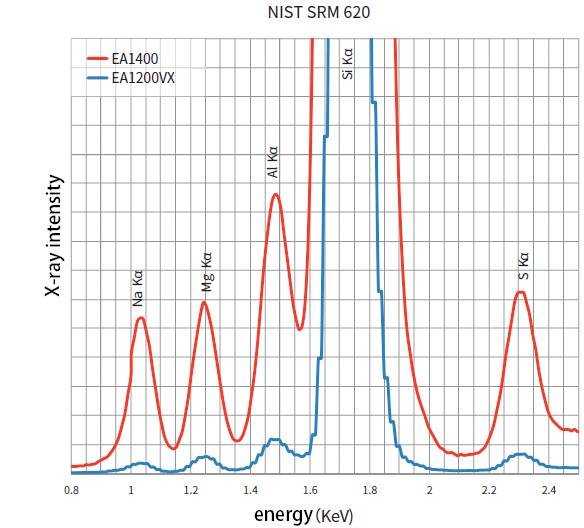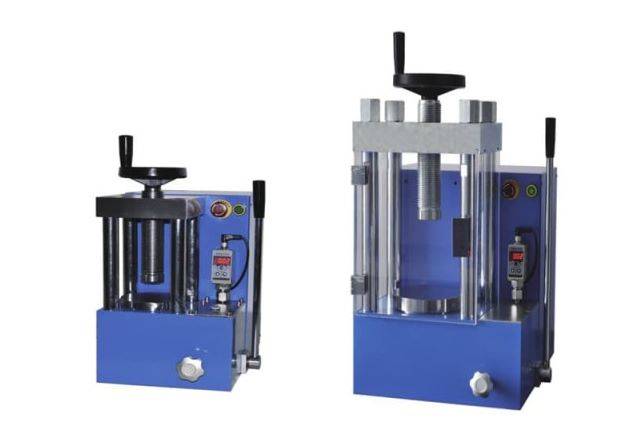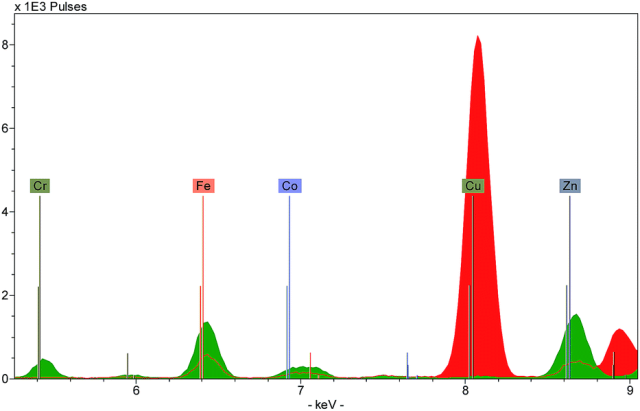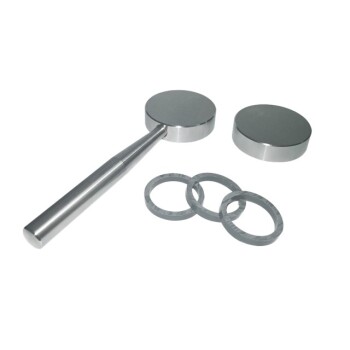Introduction: Importance of Optimal Pressure
The process of XRF pellet pressing involves applying pressure to a sample to create a solid pellet that can be analyzed by an X-ray fluorescence (XRF) spectrometer. Optimal pressure is crucial for achieving accurate and reliable results in XRF analysis. Factors such as sample type, size, and consistency can affect the pressure required for pellet pressing. Determining the optimal pressure for different sample types is essential for achieving consistent and accurate results. The benefits of using optimal pressure include increased precision, reduced variability, and improved sensitivity. Different techniques, such as manual and automatic press, can be used to achieve optimal pressure, depending on the laboratory's needs and resources.
Table of Contents
- Introduction: Importance of Optimal Pressure
- Factors Affecting Pressure: Sample Type, Size, Consistency
- Determining Optimal Pressure for Different Sample Types
- Benefits of Using Optimal Pressure
- Techniques to Achieve Optimal Pressure: Manual vs Automatic Press
- Conclusion: Consistency and Accuracy with Optimal Pressure
Factors Affecting Pressure: Sample Type, Size, Consistency
X-ray fluorescence (XRF) analysis is a widely used technique in laboratories, and preparing samples for XRF analysis requires making pellets by pressing powdered samples under high pressure. The optimal pressure for pellet pressing varies according to the type, size, and consistency of the sample.

Sample Type
The type of sample is a crucial factor in determining the optimal pressure for pellet pressing. Hard and dense samples require higher pressure than soft and porous ones. For example, geological samples are often full of very hard, brittle minerals that make pelletization difficult. On the other hand, food and plant-based materials often contain oils that dissociate and seep out under high pressure that require pressing at lower tonnages.
Sample Size
Sample size is another crucial factor that affects the required pressure. Larger samples require more force to compress into pellets than smaller ones. The particle size of the sample is also important, and pressed pellets require accuracy and specific measurements. Particle size of <50µm is ideal for pelletizing, while particle size of <75µm is also acceptable.
Sample Consistency
Sample consistency, or the homogeneity of the sample, is also important in determining the optimal pressure. Inhomogeneous samples may require higher pressure to ensure a uniform pellet. For example, if the sample has a high moisture content, it may require more pressure to achieve the desired pelletization. Moreover, the choice of binder and sample dilution ratio also affects the sample consistency.
In conclusion, by considering the factors affecting pressure during the pelletization process, high-quality pellets can be produced, which can improve the accuracy and precision of XRF analysis, leading to more reliable scientific results.
Determining Optimal Pressure for Different Sample Types
When it comes to XRF pellet pressing, determining the optimal pressure is a crucial step in achieving high-quality pellets for accurate and reliable analysis results. The optimal pressure required for producing high-quality pellets may vary depending on the type of sample being used.

Step 1: Experiment with Different Pressure Settings
Researchers and laboratory technicians often experiment with different pressure settings to identify the most suitable pressure for each sample type. This process involves testing a range of pressures and evaluating the resulting pellet quality using various parameters such as pellet density, homogeneity, and stability.
Step 2: Consider the Sample Type
The pressure required may vary depending on the type of sample being used. Soft and malleable samples may require lower pressure, while harder ones may need higher pressure to achieve good pellet quality.
Step 3: Stay Up-to-Date with Latest Research and Industry Best Practices
The process of determining optimal pressure is an ongoing one, as new sample types and XRF analysis techniques are continuously being developed. Therefore, laboratory professionals must stay up-to-date with the latest research and industry best practices to maintain high-quality standards in XRF analysis.
In addition to pressure settings, other factors such as sample preparation, binder type, and die material can also affect the quality of the pellets produced. Consistency in sample preparation procedures is also important to ensure accuracy and reliability of results.
In conclusion, determining the optimal pressure for different sample types is a critical step in XRF pellet pressing. By following the steps outlined above and staying up-to-date with the latest research and industry best practices, laboratory professionals can ensure accurate and reliable XRF analysis results.
Benefits of Using Optimal Pressure
Determining the optimal pressure for X-ray fluorescence (XRF) pellet pressing is crucial in achieving accurate and precise results in elemental analysis. Optimal pressure can be defined as the pressure required to produce pellets with the desired consistency and density. The benefits of using the optimal pressure include improved reproducibility of results, increased accuracy of elemental analysis, and reduced variation in sample preparation.
Improved Reproducibility of Results
When the pressure is too low, the pellets may be too loose and contain air pockets, resulting in inaccurate readings due to incomplete fusion of the sample. On the other hand, if the pressure is too high, the pellets may become too dense, making it difficult for X-rays to penetrate them, leading to a decrease in sensitivity and accuracy. Therefore, determining the optimal pressure is a critical step in ensuring reliable and accurate results in XRF analysis.
Increased Accuracy of Elemental Analysis
Using the optimal pressure in XRF pellet pressing can improve the quality of results and minimize errors, making it an essential consideration for any laboratory conducting elemental analysis. Pressing pellets delivers better results compared to no prep at all, also greater consistency. An analyst can produce samples very fast in automated systems or slower using manual presses and obtain the same pellet quality.
Reduced Variation in Sample Preparation
Overall, it is considered a convenient, cost-effective and reliable sample preparation technique that has become an industry standard. Pressing pellets has greater flexibility at a relatively lower cost with excellent results, although fusing beads deliver the best results because it eliminates the two main effects. Additionally, it is important to bring the particle size down as much as possible, using crushers, grinders, and millers before pressing the pellet.
In conclusion, determining the optimal pressure for XRF pellet pressing is crucial in achieving accurate and precise results in elemental analysis. Using optimal pressure in XRF pellet pressing offers improved reproducibility of results, increased accuracy of elemental analysis, and reduced variation in sample preparation. It is essential to take into consideration the type of sample being analyzed, the type of pellet press being used, and the desired pellet consistency when determining the optimal pressure. Overall, using the optimal pressure can improve the quality of results and minimize errors, making it an essential consideration for any laboratory conducting elemental analysis.
Techniques to Achieve Optimal Pressure: Manual vs Automatic Press
In XRF pellet pressing, achieving optimal pressure is crucial to obtaining accurate and reliable results in analytical chemistry. There are two techniques commonly used to achieve optimal pressure: manual and automatic press.

Manual Pressing
Manual pressing is a simple and cost-effective method that involves applying pressure to the sample using a hand-operated press. This method is prone to variations in pressure due to operator error, which can result in inconsistent pellet quality and ultimately affect the accuracy of the analysis.
Automatic Pressing
On the other hand, automatic pressing involves using a machine to apply a predetermined and consistent pressure to the sample. This method ensures uniform pellet quality and reduces the risk of human error. Automatic presses are available in different sizes and can accommodate a range of sample sizes, making them suitable for various applications.
Automatic Hydraulic Press
An automatic hydraulic press is commonly used for industrial XRF applications and other laboratory sample manipulation activities. Unlike the lever on a manual hydraulic press, an automatic press is operated by a button. The general mechanics of the two machines are similar – you set the load you want to be applied, which the pump then fulfils – but the die used in an automatic machine can often press and release via automated actions.
Hydraulic Mini Press
A hydraulic mini press is a small, portable press that uses hydraulic power to produce force. They typically only weigh 4 kilos but are still capable of applying around 2 tons of pressure. Mini presses are often favoured due to their compact size and are often used to produce KBr discs for FTIR.

Why Use a Manual Hydraulic Press in Your Laboratory?
For some labs, manual hydraulic presses present an advantage over automatic equivalents due to their lower cost. If a press is not used frequently, operating it by hand is not likely to cause much inconvenience. However, if your lab staff needs to produce pressed samples recurrently, a manual hydraulic press may be quite laborious. In these instances, an automatic press will likely be more convenient and enable a quicker pace of work.
In conclusion, while manual pressing may be suitable for smaller laboratories with limited resources, automatic pressing is the preferred method for achieving optimal pressure in XRF pellet pressing due to its reliability and consistency. Automatic hydraulic presses can improve workflow in busy laboratories, while hydraulic mini-presses offer a portable and low-cost solution for low-volume sample preparation.
Conclusion: Consistency and Accuracy with Optimal Pressure
Achieving optimal pressure is essential in XRF pellet pressing to achieve accurate and consistent results. By understanding the factors that affect pressure, such as sample type, size, and consistency, you can determine the optimal pressure required for each sample type. Using the correct pressure ensures that the sample is evenly distributed, reducing the risk of errors and improving the accuracy of the results. Manual and automatic press techniques can be used to achieve optimal pressure, with each having its own advantages. Ultimately, by using optimal pressure, you can improve the reproducibility and reliability of your XRF analysis, ensuring that you obtain the most accurate and consistent results possible.
Related Products
- Automatic Laboratory Hydraulic Press for XRF & KBR Pellet Press
- Laboratory Hydraulic Pellet Press for XRF KBR FTIR Lab Applications
- XRF & KBR steel ring lab Powder Pellet Pressing Mold for FTIR
- XRF & KBR plastic ring lab Powder Pellet Pressing Mold for FTIR
- Automatic Laboratory Hydraulic Pellet Press Machine for Lab Use
Related Articles
- Understanding Cold Isostatic Pressing: Process, Comparisons, and Applications
- Guide for Xrf Pellet Press
- Understanding the Technical Aspects of Cold Isostatic Pressing
- A Comprehensive Guide on Pressing XRF Pellets Using a KinTek Automatic Hydraulic Press
- Understanding Cold Isostatic Pressing (CIP) and Its Advantages




















